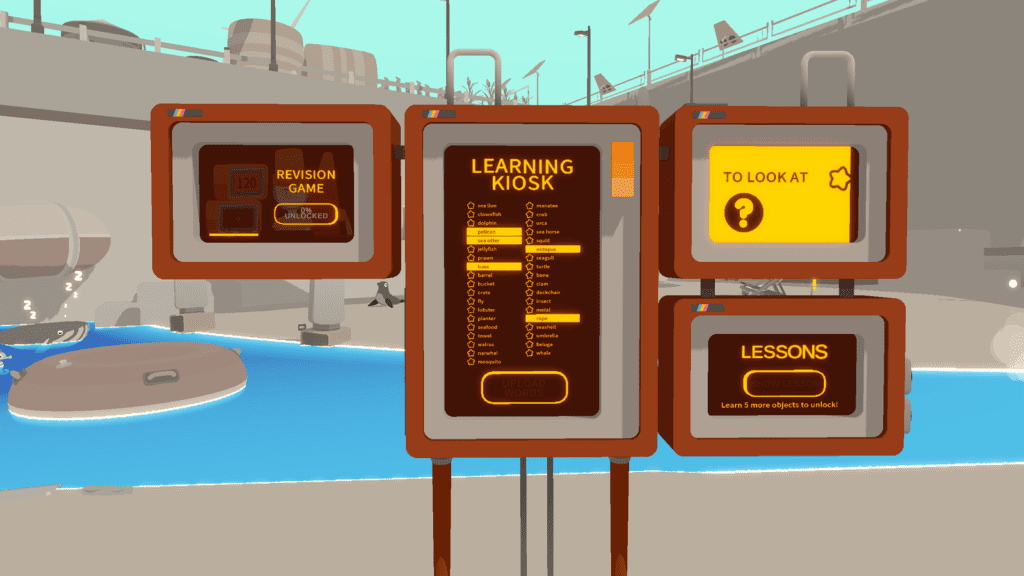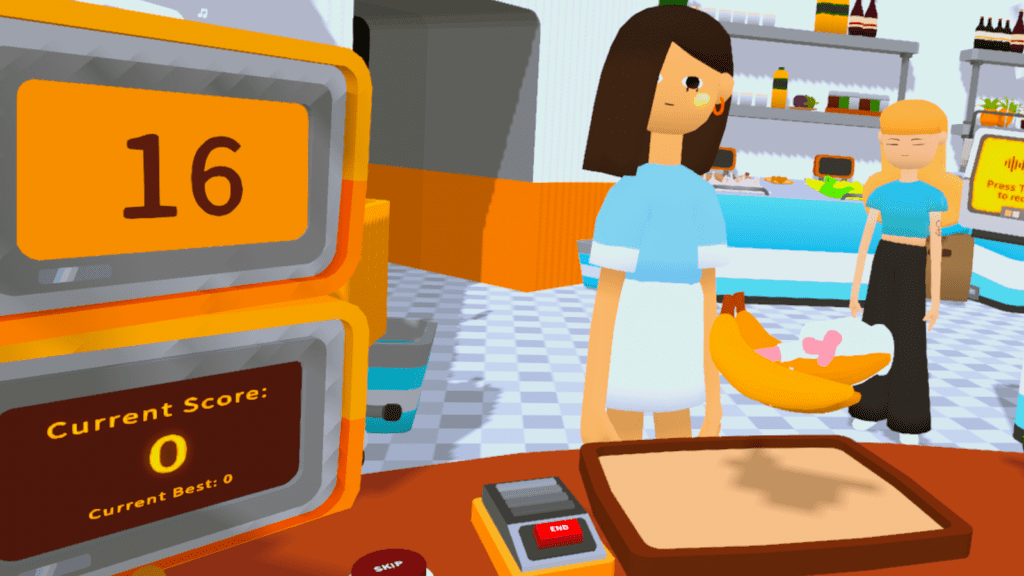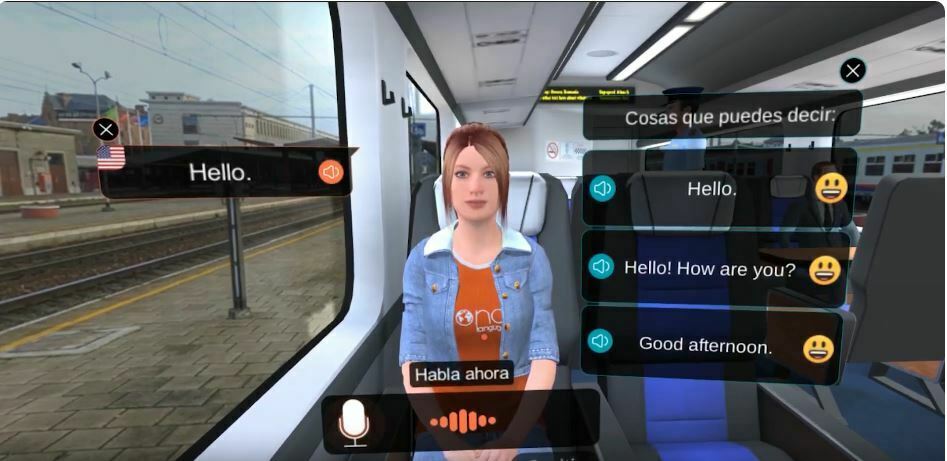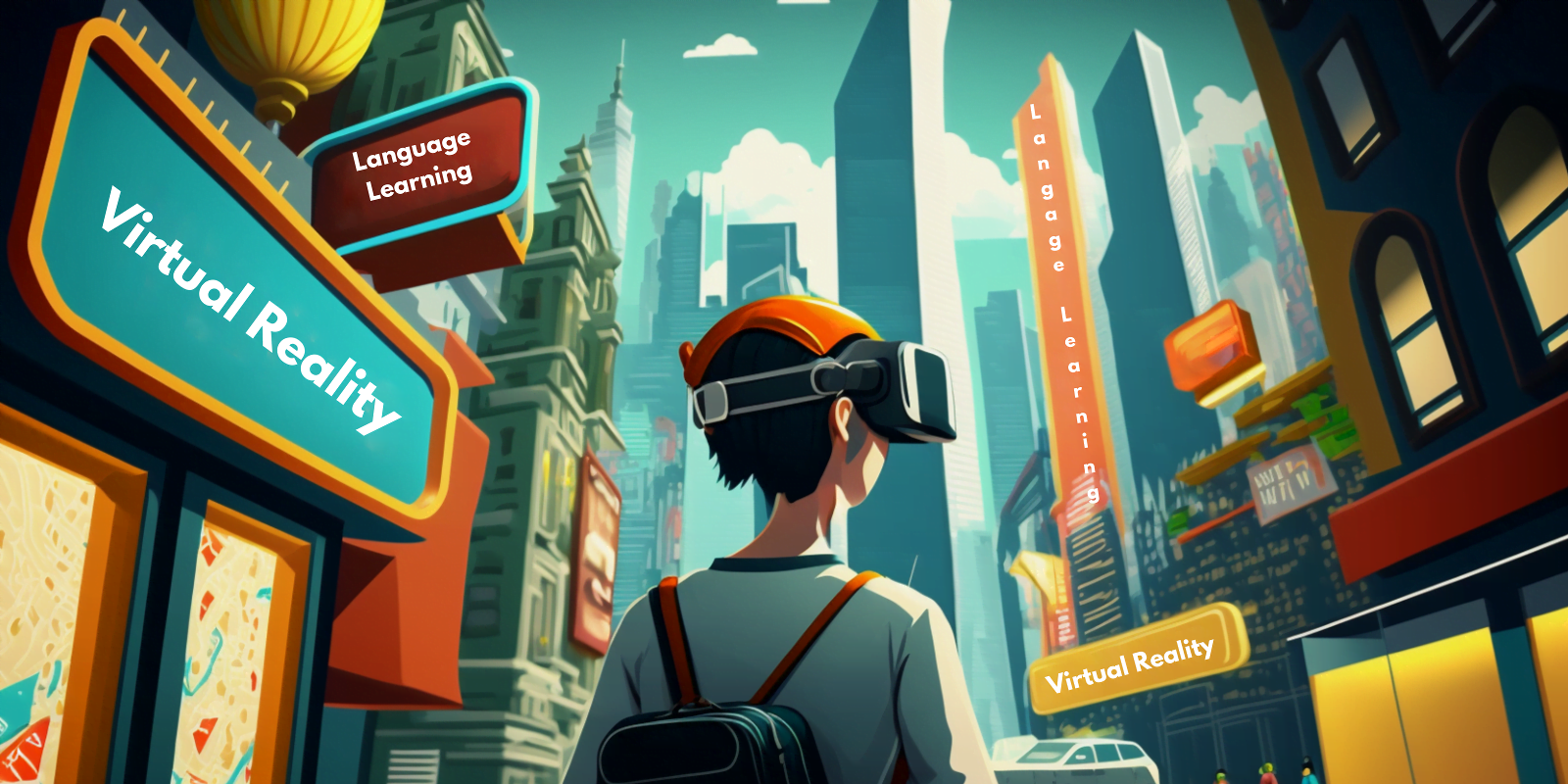
Introduction
As someone teaching languages for many years, I have seen how language learning methods have evolved. Technology’s evolution has profoundly impacted language acquisition, from traditional classroom lectures to online courses.
One technology, though, stands out from the crowd: virtual reality. Virtual reality, or VR for short, has made waves in a variety of fields, including education. Its immersive and interactive nature revolutionizes language learning.
In this blog post, I will highlight the ways in which virtual reality for language learning is transforming the traditional approach to language acquisition, and why it deserves to be an indispensable tool for every language learner.
Immersive Virtual Environments: The New Frontier in Language Learning
The Power of Immersion
One of the most significant advantages of language immersion is that it allows learners to experience the language in a real-life environment. This type of exposure is critical for developing natural speech, idiomatic idioms, and cultural knowledge.
Yet, immersion has limitations, particularly for individuals who are unable to travel to distant nations owing to geographical or economical constraints.
This is where virtual reality comes in. VR technology creates an immersive environment that duplicates real-life circumstances and scenarios, regardless of region.
For example, learners can practice ordering food in a restaurant, haggling in a market, or even attending a business meeting with international colleagues—all from the comfort of their own home. VR.
Language Learning Applications and Platforms
Virtual reality (VR) has rapidly emerged as a popular tool for language learning. It offers learners an immersive experience where they can practice speaking and listening to a language in a virtual environment. The following are some of the top VR language learning applications and platforms that have been gaining popularity among learners.
- Mondly VR is a virtual reality language learning tool that allows users to practice speaking and listening skills in real-life circumstances. Languages available include English, Spanish, French, German, Italian, Japanese, and Korean. The platform offers interactive classes that employ virtual reality technology to imitate real-life scenarios such as ordering food in a restaurant or purchasing a train ticket.
- Busuu VR is a language learning platform that offers interactive classes in virtual reality. English, Spanish, French, German, Italian, Japanese, and Chinese are among the languages available on the platform. The software evaluates and provides feedback on learners’ pronunciation using speech recognition technologies. Busuu VR also has a social aspect where learners may connect with native speakers and practice their language abilities.
- ImmerseMe is a language learning tool that provides learners with an immersive experience. The platform uses VR technology to simulate real-life scenarios, such as ordering food in a restaurant or checking into a hotel simulate real-life scenarios, such as ordering food from a restaurant or checking into a hotel. Languages available include English, Spanish, French, German, Italian, Japanese, and Chinese. ImmerseMe also gives students immediate feedback on their pronunciation and grammar.
- Language Lab is a language study platform that employs virtual reality technology to provide learners with an immersive experience. English, Spanish, French, German, Italian, Japanese, and Chinese are among the languages available on the platform. It offers interactive classes that employ virtual reality technology to imitate real-life experiences like traveling and ordering food. Languages Lab also has a multiplayer mode where students may practice communicating with one another.
- Children can learn about nouns in a fun and engaging way by playing Noun Town. It is a virtual town full of various nouns, including people, places, and things, as the name would imply. The town is created with vibrant and captivating graphics to grab the interest of young students. To learn more about the various nouns, kids can explore Noun Town and interact with them. A brief description is provided for each noun, making it simple for kids to comprehend and remember. Children will enjoy learning about nouns thanks to Noun Town’s entertaining and engaging features.
Interactive Lessons: Making Learning Engaging and Effective
Gamification of Language Learning
Gamification refers to the application of game design ideas in non-gaming circumstances. It has been utilized in education to boost student engagement and motivation.
When it comes to language acquisition, gamification may make it more pleasant and effective. Virtual reality is an excellent platform for gamified language learning.
Learners, for example, can participate in language-related games, accomplish quests and tasks, and earn incentives for their progress. Language learning becomes a more enjoyable and interesting task as a result of these exercises.

Real-time feedback and personalized learning
One of the biggest advantages of virtual reality for language learning is the ability to provide instant feedback during language practice. For example, learners can receive feedback on their pronunciation, grammar, and vocabulary usage in real-time, allowing them to make corrections and improve their skills immediately.
Furthermore, VR technology can be utilized to develop individualized language classes that are tailored to each learner’s specific needs and learning style. Machine learning algorithms may monitor learner performance and change lessons accordingly, resulting in a personalized experience that enhances learning outcomes.
Building Global Connections: Social and Cultural Aspects of Virtual Reality for Language Learning
Virtual Language Exchange Programs
Language exchange programs have long existed, allowing learners to practice their language skills with native speakers of the target language.
These programs, however, might be difficult to obtain for students who reside in areas with a limited native-speaker population or who are unable to go overseas.
By offering a virtual venue for language exchange programs, virtual reality can help overcome these limitations. Learners can practice their language abilities while also acquiring cultural knowledge by interacting with native speakers from around the world in a realistic and immersive setting.

Overcoming Barriers to Communication
Speaking in a foreign language can be an anxiety-inducing experience for many language learners, leading to shyness and an unwillingness to practice.
Virtual reality can help minimize these barriers by offering a secure and controlled setting for learners to practice their speaking skills.
Importantly, VR technology allows learners to develop their avatars, which can help them grow in confidence and minimize their anxiety about making mistakes in front of others.
This gives a pleasant and supportive environment for learners to practice their language skills and gain confidence.
Challenges and Opportunities
While virtual reality has the potential to revolutionize language training, it is not without challenges. The expensive cost of VR equipment, which may be prohibitive for some students and institutions, is one potential downside. Also, there is a learning curve associated with utilizing VR technology, which some students may find challenging.
Nonetheless, the advantages of virtual language study greatly exceed the drawbacks. To realize the benefits of virtual reality, it is critical to solve the problems and discover innovative solutions to make VR technology more accessible and user-friendly.
Emerging Technologies and Innovations
As VR technology advances, new opportunities, and innovations that can improve language learning experiences emerge. Haptic feedback technology, for example, may imitate the sense of touch, giving learners a more immersive and realistic experience. Furthermore, augmented and mixed reality technologies can be combined with VR technology to create even more engaging and interactive language learning experiences.
Conclusion
Virtual reality is undeniably changing the landscape of language instruction. Its immersive and interactive nature makes language learning more interesting, effective, and pleasurable for students.
By embracing the promise of virtual reality (VR) technology for language learning, learners, educators, and technologists may collaborate to usher in a new era of language learning in which language proficiency and cross-cultural understanding are more accessible than ever before.








Recent Comments